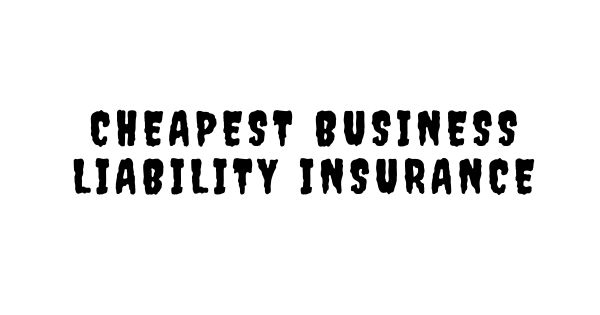The Ultimate Guide to Understanding and Choosing the Right Insurance Policy in 2024
Insurance policies are a cornerstone of financial planning, providing security against unforeseen risks and expenses. However, with so many types and providers available, understanding how insurance works and selecting the best policy can be challenging. This comprehensive guide delves into every aspect of insurance policies, from their core principles and benefits to detailed comparisons of leading products.
What is an Insurance Policy?

An insurance policy is a legal contract between a policyholder (the insured) and an insurance provider (the insurer). The insurer agrees to compensate the policyholder for specific financial losses or liabilities in exchange for a regular premium. The policy outlines the terms of coverage, including what events are insured, the duration of the policy, and any exclusions.
Core Components of an Insurance Policy
An insurance policy is a detailed contract that outlines the agreement between the insurer and the policyholder. Understanding its core components is essential to make informed decisions and to ensure the policy provides the coverage you need. Here’s a detailed look at the key elements that make up an insurance policy:
1. Policy Premium
The premium is the amount the policyholder pays to the insurer to maintain the coverage. Premiums can be paid monthly, quarterly, annually, or as a lump sum. The cost of the premium depends on various factors, including:
- Type of Insurance: Different types of policies, such as life, health, or auto insurance, have varying premium structures.
- Risk Profile: Insurers assess the risk associated with the policyholder. For example, a smoker may pay higher health insurance premiums due to increased health risks.
- Coverage Level: Comprehensive policies with broader coverage tend to have higher premiums than basic plans.
Why It Matters:
Paying the premium on time is crucial to keeping the policy active. Failure to pay may result in the policy lapsing, leaving the policyholder unprotected.
2. Policy Coverage
Coverage refers to the scope of protection provided by the insurance policy. It specifies what risks or losses are covered under the contract and the maximum amount the insurer will pay. Coverage details include:
- Types of Covered Risks: For example, a health insurance policy might cover hospitalization, doctor visits, and medications, while auto insurance could cover accidents, theft, and natural disasters.
- Coverage Limits: These are the maximum amounts the insurer will pay for claims. Policies may have overall limits or specific limits for different categories of claims.
Why It Matters:
Understanding what is covered ensures that the policyholder is aware of the benefits they are entitled to and can avoid unexpected financial burdens during a claim.
3. Deductibles
A deductible is the amount the policyholder must pay out-of-pocket before the insurer begins to cover the remaining costs. Deductibles can be structured in two ways:
- Fixed Amount Deductibles: A set dollar amount the policyholder must pay.
- Percentage-Based Deductibles: A percentage of the claim amount, typically used in property and casualty insurance.
Why It Matters:
Choosing a higher deductible often reduces the premium cost but increases out-of-pocket expenses during claims. Policyholders must balance affordability with their financial ability to handle deductibles.
4. Exclusions
Exclusions are conditions or circumstances that the insurance policy does not cover. Common exclusions include:
- Pre-existing Conditions: Some health insurance policies may exclude coverage for conditions existing before the policy started.
- Intentional Acts: Damages caused by deliberate actions are typically not covered.
- High-Risk Activities: Certain activities like extreme sports may not be included in standard policies.
Why It Matters:
Knowing the exclusions helps policyholders avoid misunderstandings during claim settlements and ensures they select a policy that meets their specific needs.
5. Policy Terms and Conditions
The terms and conditions are the legal framework of the insurance policy. This section includes:
- Duration of the Policy: Specifies the period during which the coverage is active.
- Renewal Conditions: Outlines the process for renewing the policy after its expiration.
- Claim Filing Procedures: Details how to report and process claims.
Why It Matters:
This section is critical for understanding the rights and responsibilities of both the insurer and the policyholder, ensuring smooth interactions throughout the policy period.
6. Riders and Add-Ons
Riders, also known as endorsements, are additional benefits that policyholders can add to their base policy for extra protection. For example:
- Health Insurance Riders: Coverage for maternity or critical illness.
- Life Insurance Riders: Waiver of premium in case of disability.
Why It Matters:
Riders customize the policy to align with the policyholder’s specific needs, enhancing the value of the insurance plan.
Key Features of Insurance Policies
Insurance policies come with several defining features that ensure they provide financial security and peace of mind. Understanding these features is crucial for selecting the right policy tailored to your needs. Below, we explore the key elements that make insurance an essential financial tool.
Risk Management and Transfer
Insurance allows individuals and businesses to transfer financial risks to the insurer. By paying a premium, the policyholder ensures that potential financial burdens, such as medical bills or property damage, are absorbed by the insurer.
- Importance: This feature reduces the uncertainty of financial losses, enabling better financial planning and security.
Premium Payments
The premium is the cost of purchasing and maintaining an insurance policy. It can vary based on factors such as the type of insurance, the coverage amount, and the risk profile of the insured.
- Payment Options: Premiums can be paid monthly, quarterly, annually, or as a lump sum.
- Significance: Timely premium payments keep the policy active, ensuring uninterrupted coverage.
Comprehensive Coverage
Insurance policies offer coverage against various risks depending on the type of policy. For instance, health insurance covers medical expenses, while auto insurance covers vehicle-related damages or theft.
- Details: Coverage is defined in the policy document, specifying what events or losses are insured.
- Benefit: Comprehensive coverage ensures that policyholders are protected against a broad range of unforeseen events.
Flexibility and Customization
Many insurance policies allow for customization through riders and add-ons. These optional features enhance the base policy by providing additional benefits.
- Examples: Critical illness riders, maternity benefits, or accidental death coverage.
- Value: Customization ensures the policy aligns closely with the insured’s unique needs.
Financial Compensation
One of the core functions of insurance is to provide financial compensation or direct assistance in case of a covered loss. This may include payouts for medical treatment, repair costs, or replacement of lost items.
- Significance: This feature offers immediate financial relief, helping policyholders recover from unexpected events without depleting savings.
Legal and Regulatory Compliance
Insurance policies operate under strict legal frameworks to protect the interests of both the insurer and the insured. These regulations ensure transparency and fairness.
- Trust Factor: Regulatory oversight builds confidence in the policyholder, ensuring their rights are upheld.
Benefits of an Insurance Policy
Insurance policies offer numerous advantages that make them indispensable in modern financial planning. Here’s a detailed look:
- Financial Protection:
Insurance shields policyholders from unexpected financial burdens. For instance, health insurance can cover hospital bills, while auto insurance pays for vehicle repairs after an accident. - Risk Management:
By paying a small premium, policyholders can mitigate significant financial risks, such as damage to their home or medical emergencies. - Savings and Investment:
Some policies, like life insurance with investment components, allow policyholders to grow their wealth while securing their future. - Tax Benefits:
Many insurance policies qualify for tax deductions, enabling policyholders to save on taxes while ensuring financial security. - Peace of Mind:
Knowing you have a safety net in place reduces stress and provides confidence in managing life’s uncertainties.
How Insurance Policies Work

Insurance policies function as a safeguard against financial losses by transferring risk from individuals or organizations to an insurance provider. Understanding how these policies work is essential for choosing the right coverage and using it effectively. This section delves into the mechanics of insurance policies, explaining their structure, operations, and benefits.
The Principle of Risk Transfer
At the heart of every insurance policy is the principle of risk transfer. Policyholders agree to pay a regular premium to the insurer, who in turn assumes the financial risk of specified events. These events could range from accidents and illnesses to property damage or loss.
- How it Works:
The insurer pools premiums from multiple policyholders, creating a fund used to pay for claims. This shared approach reduces the financial burden on any one individual or organization. - Importance:
This system allows policyholders to manage risks they could not handle independently, such as catastrophic medical expenses or rebuilding costs after a fire.
The Process of Purchasing an Insurance Policy
Buying an insurance policy involves several steps to ensure the coverage aligns with the policyholder’s needs:
- Assessment of Needs:
Policyholders determine the type of insurance required (e.g., health, life, auto) based on personal or professional risks. - Research and Comparison:
Comparing policies from multiple providers helps identify the best fit in terms of coverage, premium, and additional benefits. - Application:
Applicants provide detailed information about their health, assets, or lifestyle to help the insurer assess risk. - Underwriting:
The insurer evaluates the application and determines the premium based on the risk level. - Policy Issuance:
Once approved, the insurer issues the policy, outlining the coverage, terms, and conditions.
Premium Payments
Premiums are the lifeblood of an insurance policy. Regular premium payments ensure that the policy remains active, granting continuous coverage.
- How Premiums Are Calculated:
Premiums are based on factors like age, health status, lifestyle, and the type of coverage. For example, a young, healthy individual will typically pay less for health insurance than someone with chronic conditions. - What Happens If Premiums Are Missed:
Failure to pay premiums can lead to a lapse in coverage, meaning the insurer will no longer be obligated to cover claims.
Claims Filing and Settlement
The ability to file claims is one of the most critical aspects of how insurance policies work. A claim is a formal request made by the policyholder to the insurer for compensation of a covered loss.
- Event Occurrence:
A claim is initiated when a covered event, such as an accident or illness, occurs. - Filing the Claim:
Policyholders must provide documentation proving the loss, such as medical bills, police reports, or repair estimates. - Claims Processing:
The insurer evaluates the claim to ensure it falls within the policy’s coverage. This involves verifying the details and assessing the extent of the loss. - Approval or Rejection:
If the claim is valid, the insurer provides compensation as outlined in the policy. If not, the claim may be denied, often due to exclusions or insufficient documentation.
Exclusions and Limitations
Insurance policies are not all-encompassing. They include exclusions—specific events or conditions that are not covered—and limitations, which cap the extent of coverage.
- Examples of Exclusions:
- Pre-existing health conditions in certain health insurance plans.
- Damages due to illegal activities in property insurance.
- Understanding Exclusions:
Policyholders must review these carefully to avoid surprises during claims.
Renewal and Termination
Most insurance policies are time-bound and require periodic renewal to remain active. Renewal ensures continued protection without interruptions.
- Renewal Process:
Policyholders can renew their policies by paying the premium before the expiration date. Some policies offer automatic renewal for convenience. - Termination:
Policies can be terminated due to non-payment of premiums, fraud, or at the request of the policyholder.
The Role of Riders and Add-Ons
Riders or add-ons enhance the base policy, offering additional benefits for an extra premium. For example, a critical illness rider in a life insurance policy provides a lump sum payment if the insured is diagnosed with a specified illness.
- Why Riders Matter:
They allow customization of policies to better meet the specific needs of the policyholder.
Top Insurance Policies to Consider

1. Progressive Insurance
Progressive is one of the leading providers of auto, home, and life insurance in the United States.
- Features:
- Flexible policy options for individuals and families.
- An intuitive mobile app for managing policies and filing claims.
- Pros:
- Affordable premiums and multi-policy discounts.
- Comprehensive coverage with add-ons like roadside assistance.
- Cons:
- Customer service quality may vary depending on location.
- Use Cases:
Ideal for families seeking affordable auto and home insurance under one roof. - Price:
Starts at $25/month for basic auto insurance.
2. State Farm Insurance
State Farm stands out for its personalized service and a vast network of agents.
- Features:
- Offers a wide range of policies, including auto, life, and health insurance.
- Strong local presence for face-to-face support.
- Pros:
- Excellent customer service and claim processing.
- Various discounts for combining policies.
- Cons:
- Slightly higher premiums compared to competitors.
- Use Cases:
Best for individuals who value personalized, in-person consultations. - Price:
Premiums start at $30/month for auto insurance.
3. Allianz Global Assistance
Allianz specializes in travel insurance and is renowned for its comprehensive coverage.
- Features:
- Coverage for trip cancellations, lost luggage, and medical emergencies.
- Customizable plans for frequent and occasional travelers.
- Pros:
- Extensive global network for emergency assistance.
- Easy claims process.
- Cons:
- Higher costs for short-term plans.
- Use Cases:
Perfect for business professionals and families planning international trips. - Price:
Starts at $50 for a one-week travel plan.
How to Choose the Best Insurance Policy
Selecting the right insurance policy involves evaluating multiple factors to ensure it meets your needs:
- Identify Your Needs:
Assess your financial situation, dependents, and potential risks to decide the type of coverage required. - Compare Policies:
Research different providers, their coverage options, and premium costs. Look for customer reviews and claim settlement ratios. - Understand the Terms:
Read the policy documents carefully to understand inclusions, exclusions, and claim processes. - Seek Expert Advice:
Consult financial advisors or insurance agents to get tailored recommendations. - Use Technology:
Leverage online platforms to compare policies and get instant quotes.
Detailed Use Cases
Health Insurance:
Health insurance covers medical expenses for illnesses or accidents. It helps individuals avoid high out-of-pocket costs during emergencies.
Travel Insurance:
For international travelers, a travel policy provides security against unforeseen issues like trip cancellations, delays, or medical emergencies abroad.
Auto Insurance:
Auto insurance protects vehicle owners from financial liabilities arising from accidents, theft, or natural calamities.
FAQs
1. What is an Insurance Policy?
An insurance policy is a contract where an insurer provides financial protection to a policyholder in exchange for regular premium payments.
2. How Does an Insurance Policy Work?
It works by transferring financial risk from the policyholder to the insurer, who compensates for covered losses or damages.
3. What Are the Benefits of Insurance Policies?
Benefits include financial security, risk management, tax savings, and peace of mind.






